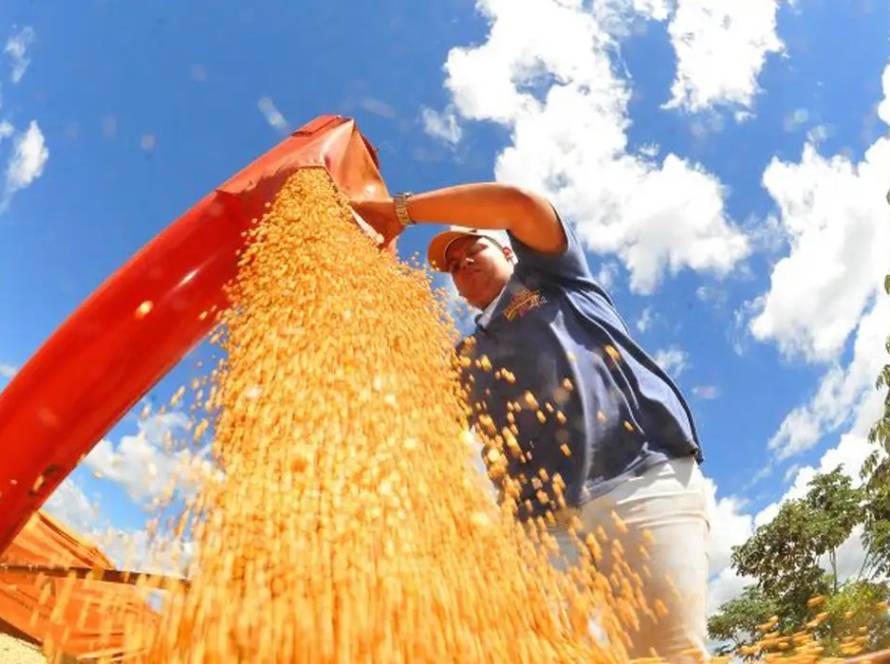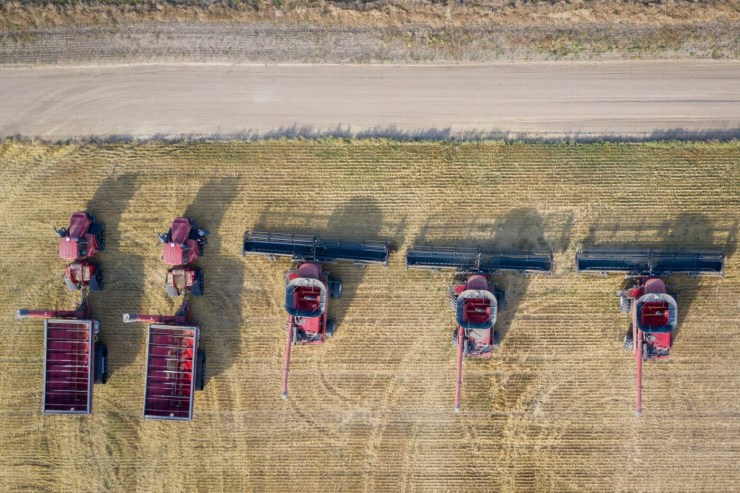The upward adjustment of the 2024/25 Paraguayan harvest indicates an increase in productivity, compared to last year's figures. According to a report this month in June by StoneX, a global financial services company, the previous year's cycle reached only one ton per hectare, while current results register an average of 2.2 t/ha, with some locations reaching up to 3 t/ha.

Market Intelligence Analyst at StoneX, Larissa Barboza Alvarez: ““The main harvest was estimated at 8.69 million tons in June 2025. This increase is largely due to the recovery observed in the Chaco” – Photo: Disclosure/StoneX
The consolidated result estimated by StoneX in June, adding the harvest and the second soybean crop in Paraguay, results in 9,934,900 tons, a slight decrease of 0.69% in relation to the 10,004,900 tons forecast in the May report. “The main harvest was estimated at 8.69 million tons in June 2025. This increase is largely due to the recovery observed in the Chaco. It is estimated that between 30% and 35% of Chaco soybeans have already been commercialized. As planting occurs later, commercialization progresses more slowly”, highlights the Market Intelligence analyst at StoneX, Larissa Barboza Alvarez.
Between the Eastern and Western regions of the country, divided by the Paraguay River, there was a difference in climate during the production cycle. “While the Eastern Region has already finished harvesting the crop, in the Chaco, an area that makes up the Western Region, the harvest is still ongoing,” explains Larissa.
The Western Region experienced significant rainfall, which caused rivers to overflow, affected road conditions and compromised part of agricultural productivity. In crops planted in December, excess moisture reduced yields. On the other hand, areas planted later performed very well for the region's standards. According to the report, approximately 65% of the crop has already been harvested and, given the lack of rain expected for the next two weeks, a significant increase in the pace of field work is expected.

Photo: Daiane Mendonça
Soybean off-season
While the main soybean harvest was revised upwards, the outlook for the second crop of the oilseed in Paraguay fell, from 1,332,500 million tons estimated in May to 1,242,500 million tons in June, a drop of 6.8%.
The disparity in production averages is highlighted by the StoneX analyst. In the department of San Pedro, there have been no adjustments to the region's production estimate to date, but this possibility cannot be ruled out given the large disparity in yields observed in the field. According to Larissa, the average yield for the current harvest in the department is 1.7 tons per hectare.
The StoneX report also points out that specific areas with very good yields were identified in San Pedro, such as Colonia Río Verde and Colonia Nueva Durango. These areas, with later plantings, performed better. Santa Rita presented mixed results: while the first harvests were positive, the rest showed low yields, a situation similar to that of some areas in Itapúa.

Photo: Alvaro Rezende
However, areas located mainly in the South and Central-West recorded productivity close to 1 t/ha, insufficient even to cover production costs. On the other hand, areas in the north showed more positive results, contributing to raising the overall average for the region.
Regarding the second soybean crop in the Eastern Region, especially from Route 2 to the North, the complementary cycle showed better results than the main harvest. Unlike the harvest, in which the South had the best yields, in the second soybean crop it was the North that stood out. “In Caaguazú, locations such as Vaquería and Yhú exceeded expectations. It is estimated that 90% will have already been harvested by the end of May, with only the last areas remaining for the first half of June. A production of 1.24 million tons is expected in the second soybean crop, thus totaling 9.93 million tons for the 2024/25 cycle”, projects Larissa.
Marketing
As for prices, quotations in Chicago have been pressured by good weather conditions, which caused falls in some sessions. Overall, the total amount of Paraguayan soybeans traded has not yet exceeded 70%.
The basis (price disparity caused by the geographical difference between the commodity's delivery points) fluctuated

Photo: Claudio Neves
between US$ -30/ton and -35/ton in the last weeks of May and, in the first of June, an improvement in discounts was observed, as the basis value in Asunción was reduced to US$ -28/ton.
Second-crop corn
The second corn crop in Paraguay has followed an agronomic scenario similar to that of the second soybean crop, since both crops share the same calendar. The areas with better climate conditions, especially north of Route 2, concentrated most of the sowing and recorded the best production performances. In the north of Alto Paraná, the results were quite positive, with an increase in the cultivated area standing out. In Itapúa, however, the crops showed lower productivity, reflecting the adverse effects of the climate in the region.
With the arrival of June, however, the forecast of rain and increased humidity bring concern for the end of the harvest. This is because, when the already dry grain becomes moist again, it can ferment, compromising the quality of the corn and sorghum still in the field.

Photo: Disclosure/StoneX
According to the StoneX report, the situation is considered critical for any product yet to be harvested, due to the high moisture content. In the case of corn, it is still possible to apply discounts for quality, but for crops such as wheat, losses tend to be more severe, especially due to the reduction in the pH of the grains. “It is estimated that the corn harvest has already begun, although it has only reached 2% so far. The pace should accelerate between the end of June and mid-July. Therefore, what we are seeing is a sale of only 31% – partly due to the drop in prices”, says Larissa.
Currently, the producer receives US$ 130/ton, compared to US$ 160/ton a month ago. This drop discouraged new advance negotiations.
In addition, Paraguayan production continues to be influenced by external and climatic factors. Pressure from the Brazilian market, combined with the absence of frost in the last week of May, limited the possibility of supply cuts. “Therefore, at the beginning of June, production of 5.25 million tons of corn is expected in the country,” says Larissa.





